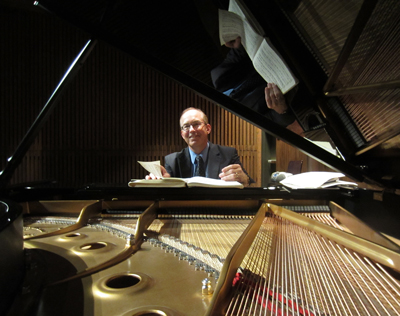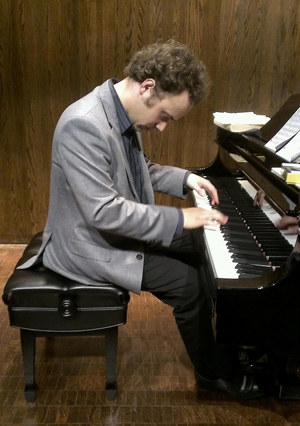by Guytano Parks

This morning’s enlightening conversation began with the simple question, “what is appropriate?” There are many considerations to ponder if one were to improvise a cadenza or add extra notes to the score during a concerto performance in modern-day presentations of concert music. Undoubtedly, a daunting and perhaps terrifying prospect for most, but in Mozart’s time, it was customary and second nature for the performer to not only improvise a cadenza at that special moment in a concerto, but to also add notes throughout the piece, as the solo part was rarely ever completely written down. Soloists of that period had all sorts of tricks and devices up their sleeves — scales, arpeggios, trills, themes, motives, etc. — and the technique and wisdom to know how and when to utilize them.
Griffith pointed out the striking similarity of the thought process between performers of that bygone era and today’s jazz musicians. In jazz, possessing improvisational skills is integral to the expression of the language, and despite having played a particular song countless times, variation and spontaneous inspiration play a key role in its success and enjoyment. So, much like the artistry and creativity of today’s musicians who speak the language of jazz, performers in Mozart and Beethoven’s day were likewise equipped with elements of their Classical language, delighting and dazzling audiences with their technique, individuality and inventiveness.

Griffith hovered over Schimpf’s shoulder, amusingly calling out the action play-by-play in sportscaster fashion: “…oh, there’s a good use of scales… trills — very nice… and great sequencing!…” As he was being praised for his cadenza-writing skills, Schimpf protested, “but it’s all Mozart,” to which Griffith countered, “aaah — but it’s you taking elements from Mozart’s creation and manipulating and juxtaposing them into your own individual and brilliant expression!”
Photos by Guytano Parks.
Published on ClevelandClassical.com August 4, 2013
Click here for a printable version of this article.



